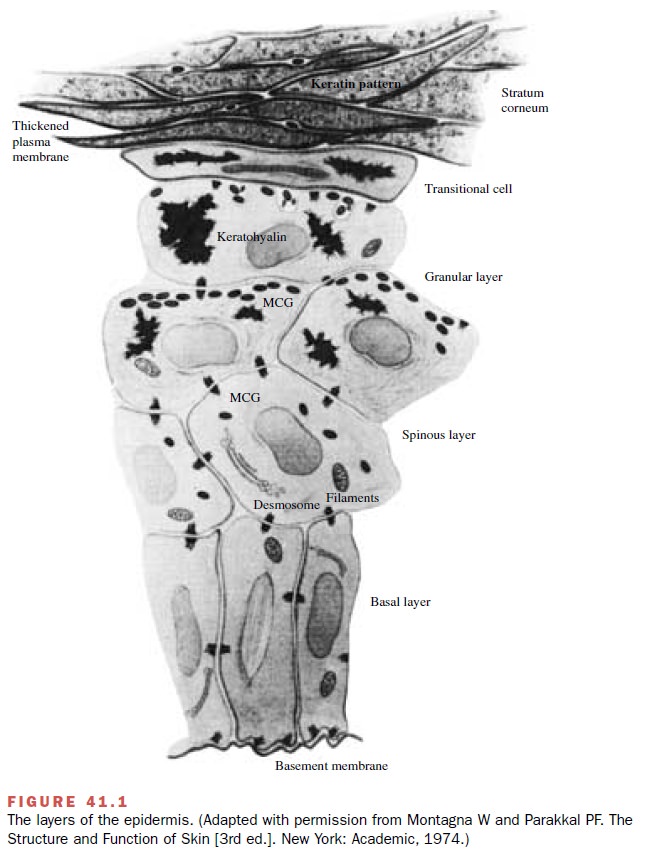Chapter: Modern Pharmacology with Clinical Applications: Drugs Used in Dermatological Disorders
Skin Structure
SKIN STRUCTURE
The skin consists of two main
compartments, the epi-dermis, a
stratified squamous epithelium, and the un-derlying dermis, a richly vascularized tissue embedded in a connective
tissue matrix (Fig. 41.1). The epidermis consists of multiple layers of
keratinocytes, which dif-ferentiate into the outermost layer, the stratum
corneum.

This layer contains the hydrophilic structural protein keratin surrounded by hydrophobic intercellu-lar lipids, a
remarkably effective barrier to many topi-cally applied agents. The
differentiation of ker-atinocytes in the basal layer from proliferative cells
to highly differentiated nondividing cells in the stratum corneum is tightly
regulated by a variety of intrinsic and extrinsic factors, including cytokines
and calcium. The epidermis also contains melanocytes,
which synthesize the photoprotective pigment melanin, and Langerhans cells, the
dendritic antigen-presenting cells that com-pose the farthest outpost of the
body’s immune system.
The dermis provides a base
for the epidermis and contains fibroblasts
that elaborate proteins, such as collagens and elastin, which are crucial for
the skin’s structural integrity. In addition, mast cells, enriched in a variety of proinflammatory substances,
play an im-portant role in tissue remodeling, wound healing, and fibrosis.
Related Topics